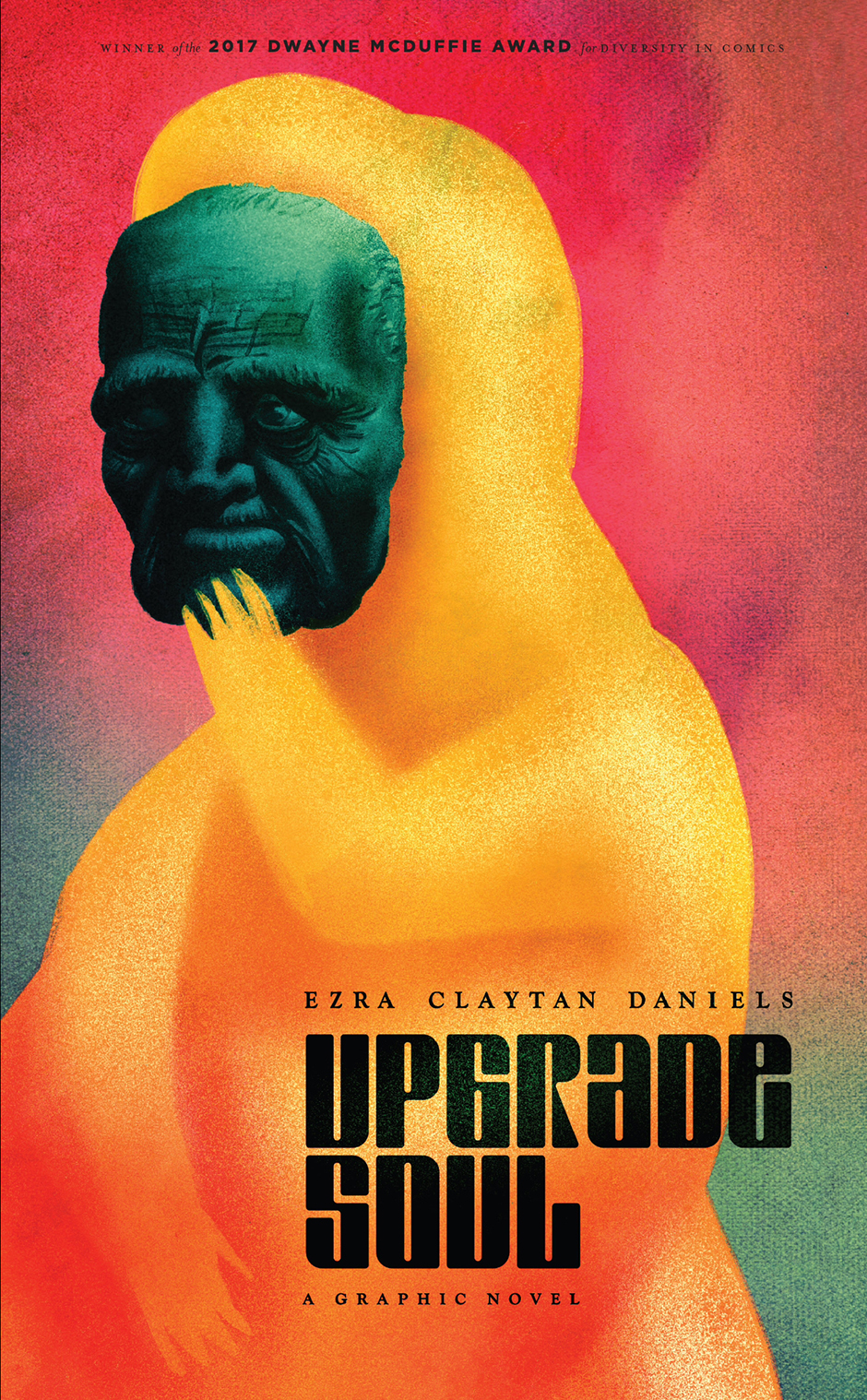Upgrade Soul by Ezra Claytan Daniels
Upgrade Soul
By Ezra Claytan Daniels
The common belief about Frankenstein is that it is a monster story. The focus is on the Creature’s hideousness. This is ironic given the central heart of the novel in which the Creature makes it clear that he wanted to be a benefit to humanity but was denied that option because people looked on him as a demon. So he took the only narrative available to him. While the revenge that the Creature exacts is of course vicious, as readers we are left to ask if the real monster may instead be his creator Victor or perhaps society itself for its inability to accept difference. I bring all this up because as I was reading Upgrade Soul it struck me how the comic was a spiritual successor to Mary Shelley’s novel. Besides a contemporary take on scientific hubris, the comic also explores what it might mean to live as a creature, how others may perceive you, and how you may begin to perceive yourself. At its core, Upgrade Soul is a story about identity.

The set-up to Upgrade Soul is that Hank and Molly Nonnar decide to undergo an experimental “gene cleansing” which promises to make them the best versions of themselves. Since they are getting older and still have so much to accomplish, they volunteer for the procedure. It, of course, doesn’t go as planned and Hank and Molly end up looking like Tina from Like a Velvet Glove Cast in Iron. The scope of the mistake is larger than this, but I don’t want to give too much away. Suffice it to say that the procedure makes the couple question themselves and their relationship. If you fell in love with a person for their wonderful potential but also for all their little flaws, are they the same person you fell in love with when those flaws are taken away? Is the person you love gone? So like Frankenstein, Upgrade Soul is more than a horror story. Besides its exploration of identity, it is also a story about a family and, more fundamentally, a marriage. So even with the body horror that fills the book, there is a deep foundation in the human and this is what gives the comic its power.

There are other minor themes that run throughout the book, such as ruminations on race. This is especially reflected in Hank’s work and the fact that one white character kills the wrong person because she can’t tell two old black men apart. It also explains a bit of Hank’s (or Henry’s) ability to deal with the prejudice of others and his desire to push back. In other words, there is a lot to consider here and that makes the comic very satisfying.

That said, the book starts a bit slowly with a lot of talk about scientific discovery and the marketing hype that goes along with it. Yet these scenes are intercut with jumps in time that create an uneasy tension that draws you into the book. Once the story fully gets going and all the characters revealed, the comic is engrossing, full of great dialogue and creepy interactions. The color choices are also nice, often favoring festering yellows and sickly greens. You can sense all the thought that went into every decision. This is a well-crafted piece of work.
Overall, I was blown away by this book. It is not only good speculative sci-fi, it’s a good book period. It’s the kind of comic that you could recommend to almost anyone. It is definitely on my list of favorite graphic novels.


